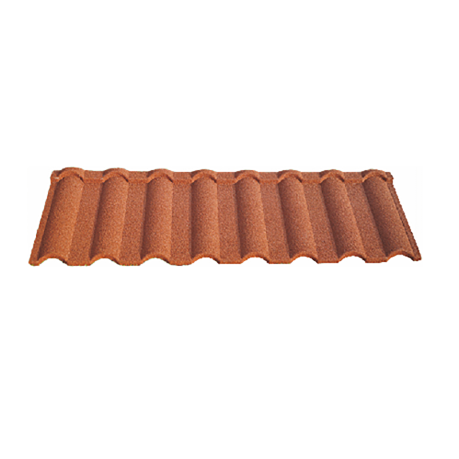
Aug . 09, 2024 04:45 Back to list
Exploring the Aesthetic and Functional Benefits of Double Roman Terracotta Roof Tiles for Modern Architecture
The Significance of Double Roman Terracotta Roof Tiles
Double Roman terracotta roof tiles have long been a staple in Mediterranean architecture, celebrated for both their aesthetic appeal and practical functions. Originating from ancient Roman designs, these tiles have transcended time, evolving in form and usage while maintaining their essential characteristics. This article delves into the rich history, functionality, and cultural significance of double Roman terracotta roof tiles.
Historical Context
The design of the double Roman tile dates back to ancient Rome, where roofing innovations were necessary to address the region's climate and resources. Clay was abundant, and Roman engineers sought to create roofing materials that were both durable and efficient in shedding rainwater. The double Roman design features two principal curves that overlap, allowing for added strength and better water runoff compared to flat tiles. This not only improved the longevity of roofs but also offered a visually dynamic appearance that became associated with Roman architecture.
As the Roman Empire expanded, so too did the use of terracotta tiles throughout Europe. By the Middle Ages, these tiles had become a common feature in many regions, adapting to local building styles and climates. Their use continued into the Renaissance, where they were favored for their versatility and artistic potential, seen in the rooves of churches, villas, and public buildings.
Structural Benefits
One of the most significant advantages of double Roman terracotta tiles is their structural integrity. The shape of these tiles promotes an interlocking design that enhances stability. When installed correctly, the overlapping edges ensure that the roof is not only waterproof but also resistant to strong winds. The durability of terracotta, especially when fired at high temperatures, means these tiles can withstand harsh weather conditions.
Moreover, terracotta roofing has natural insulating properties. It keeps interior spaces cooler during summer months while providing warmth during winter. This thermal regulation contributes to energy efficiency in buildings, making terracotta roofs an environmentally-friendly choice in modern construction.
double roman terracotta roof tiles

Aesthetic Appeal
Beyond their functional benefits, double Roman terracotta tiles add a distinct aesthetic charm to buildings. Available in a variety of colors, ranging from deep reds to earthy browns, these tiles can complement various architectural styles. Their classic design works harmoniously with rustic cottages, modern homes, and historical buildings alike, making them a sought-after choice for homeowners and architects aiming for a timeless look.
Furthermore, as trends in sustainable architecture grow, the appeal of terracotta tiles has risen due to their eco-friendly nature. Made from natural clay materials, they are recyclable and contribute to a lower carbon footprint compared to synthetic alternatives. The patina that forms over time adds character and uniqueness to each roof, ensuring that no two installations are exactly alike.
Cultural Significance
In many Mediterranean countries, double Roman terracotta tiles are more than just a roofing material; they represent heritage and tradition. They are often associated with the picturesque landscapes and traditional villages that define rural life in places like Italy and Spain. Their use signifies a connection to the past, invoking a sense of place and continuity through the ages.
In contemporary architecture, the revival of double Roman tiles symbolizes a wider return to traditional craftsmanship and an appreciation for materials that reflect cultural identities. Homeowners and builders are increasingly recognizing the importance of preserving historical techniques in a rapidly modernizing world.
Conclusion
Double Roman terracotta roof tiles encapsulate a blend of historical significance, functional advantages, and aesthetic beauty. Embraced across centuries and cultures, they exemplify the enduring legacy of quality materials in architecture. As we move forward, the appreciation for such traditional elements only strengthens, highlighting the need for sustainable and culturally rich building practices. Whether atop modern villas or quaint cottages, double Roman terracotta roof tiles will continue to grace our skylines, telling the stories of those who came before us and shaping those yet to come.
-
Stone Coated Metal Roof Tile-Roman Tile for Durable Roofing Solutions
NewsJul.30,2025
-
Stone Coated Metal Roof Tile-Wood Grain Tile for Durable Roofing
NewsJul.30,2025
-
Stone Coated Metal Roof Tile-Nosen Tile: Durable, Stylish Roofing Solution
NewsJul.29,2025
-
Premium Moonlight White HIREFLE Granules for High-Quality Surfaces
NewsJul.29,2025
-
Stone Coated Metal Roof Tile-Grouper Tile | Durable & Stylish Roofing
NewsJul.29,2025
-
High-Quality Roofing Granules for Sale – Durable & UV Resistant Solutions
NewsJul.28,2025







